#Kazuki Fuse
Video
Just a WIP for now. This one is all about antiheroes. :P
#berserk#jin-roh: the wolf brigade#griffith#guts#kazuki fuse#the perfect girl#amv#might do the non-animated characters in the 2nd half
23 notes
·
View notes
Photo

#gif#jin roh#人狼#jin-roh: the wolf brigade#film#movies#kazuki fuse#kei amemiya#production i.g#anime gif#film gif#cinema#hiroyuki okiura#hisao shirai
74 notes
·
View notes
Text
Found Family Tournament Round 1 Part 20 Group 99
Propaganda and further pictures under the cut


Buddy Daddies fam: Kazuki Kurusu, Rei Suwa & Miri Unasaka
Submissions are still open!
Ken, An, Kohane & Akito:
I'm gonna go ahead and say right now, this is akito-centric. Like, Akito has a found family relationship with Ken, An and Kohane, but those three don't necessarily have a found family relationship with each other. An and Kohane are basically dating, Ken is Ab's biological father, and idk Kohane to Ken is just his daughter's girlfriend
ANYWAY. so Akito has an older sister named ena and their dad sucks balls. Ena's an aspiring painter, her dad is a successful painter, and he constantly tells her that she's not going to get anywhere and she doesn't have the "power to face the hardships that come with being a professional artist", under the guise of "protecting her". Akito's ena's younger brother, so he grew up seeing this happen. More on that later.
Akito is part of a group of street performers called vivid bad squad, comprised of Kohane, An, him and Toya. Originally, they were the vivids (an and kohane), and the bad dogs (Akito and toya), but they decided to fuse their names and become one unit because they all 4 had the same goal. That goal? To surpass rad weekend, a musical event so legendary, put on by An's father, they want to create an event better than that. The bad dogs met and had been working at that since around middle school, but An was still looking for a singing partner in highschool. Who does she partner with? Kohane, a timid girl who walked into her cafe asking for directions and got too scared to ask, with no experience in music other than seeing an sing (the cafe also has a concert area in it, that's what kohane walked in on). So she partners with kohane, tells akito and toya about this.
Remember that thing earlier about ena and akito's father? Yeah. AKITO does the same thing to Kohane. Calls her a talentless shrimp who will never be able to surpass rad weekend. The difference here though is that Akito recognizes kohanes genuine motivations and after that he does treat her like a little sister in a lot of ways.
Anyway, as stated above, papa shinonome sucks. Bad dad. An's dad though, ken? Good dad. Treats akito well. Has basically adopted him. So by extension his kid is his sibling and they sure do act like it. He and An have this outward banter of rivalry but they're playing, Akito loves her a lot, is willing to help her out of emotional ruts that he's been in before, like he really does care about her and she cares about him, teasing him whenever she gets the chance but expressing concern as he mistreats himself in Stray Bad Dog and breaks into the live house to sing with him when he goes up against Arata. (The picture below with an in the center and Toya and Kohane in the background is from Akito's perspective, and that's that scene)


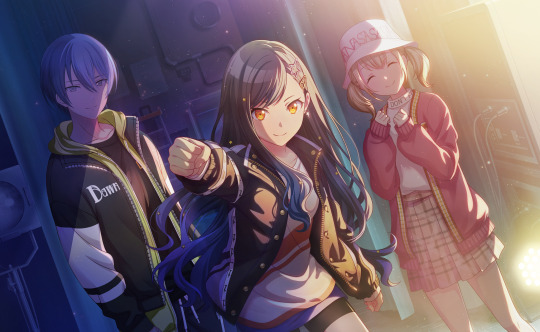
Buddy Daddies fam:
They are so kdkxjdixj- too tired to rant unfortunately
I watched this anime yesterday and it hit me in the feels

#tumblr polls#poll#polls#tournament poll#found family#found family tournament 2023#tumblr tournament#tournament#Ken Shiraishi#An Shiraishi#Kohane Azusawa#Akito Shinonome#Project SEKAI#Buddy Daddies fam#Buddy Daddies#Kazuki Kurusu#Rei Suwa#Miri Unasaka
37 notes
·
View notes
Text
I talked about Tobirama earlier [here] and how Kishimoto choosing to use the word “sinister, treacherous” to describe him might be subtext on how Kishi feels about the character and his views. Certainly, as I mentioned in the post I didn’t get the feeling he portrayed Tobirama in a good light to begin with.
There’s often discussions on whether Kishi supports fascism or right-wing politics but I don’t think he does. I was thinking about the movie he mentioned liking a lot, to the point he replicated the drawings in it and said it was one of the movies influencing his own work too: Jin-Roh: the Wolf Brigade.
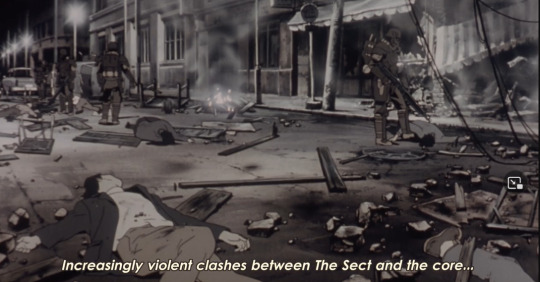


The writer Mamoru Oshii is anti-fascism, but he also acknowledged the flaws of democracy. He was part of the protest movement in the 70s, and consistently portrayed people with fascist and authoritarian tendencies in a less than flattering light throughout the Kerberos and Patlabor films in particular. This particular film opens with a scene where there are mass protest in front of cops in riot gear.
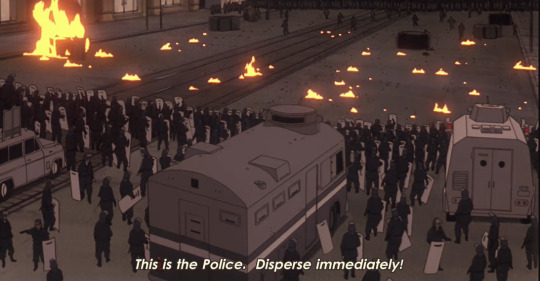

The story is set in alternate-history Japan in the 1950s following the atomic bombing and subsequent occupation of the country by victorious nazi-Germany at the end of World War II and the post-war recovery. It focuses on Kazuki Fuse, a member of the elite Kerberos Panzer Cops, a metropolitan counter-terrorism unit. Fuse confronts his own humanity when he fails to shoot a young terrorist that his unit traps in the storm-water tunnels. She detonates a bomb in front of him, killing herself.

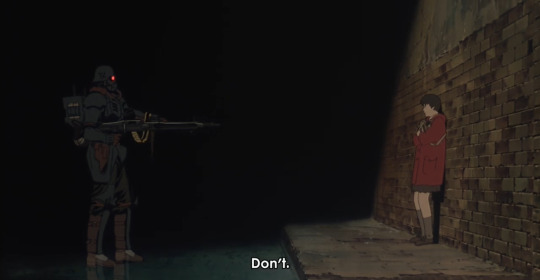



The incident damages the reputation of the unit and Fuse is put on trial and sent back to the training camp for re-evaluation.
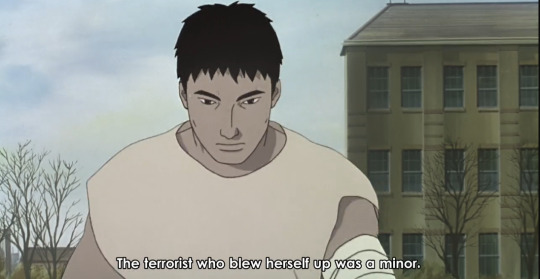
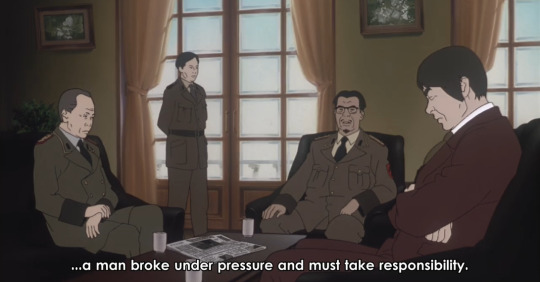

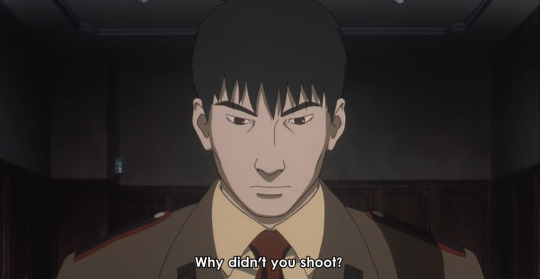
I feel the beginning already shows a lot of similar themes as in Naruto. The absolute loyalty to the government, and how one shouldn’t be swayed by feelings when working for the government.
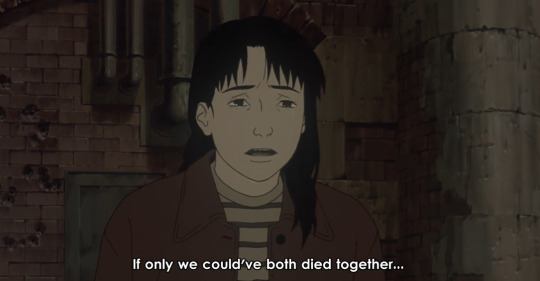

I’m not saying this scene is a direct influence to you know what scene in Naruto but it shows the choice between love and loyalty to the state. The choice between humanity and inhumanity.

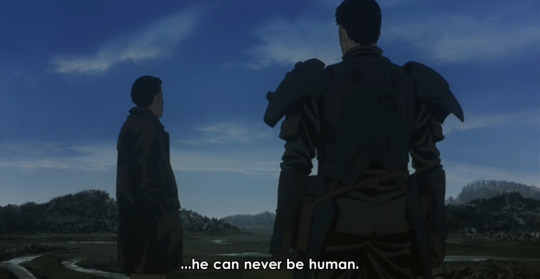
It’s definitely not a pro-fascism movie. The movie is set in an alternate time-lime where Japan is ruled by a right wing military regime. The "beasts" are members of a militarized police force that mow their own co-workers down with heavy machine guns. Some of the imagery is also a bit brutal. I don’t want to give away too much of the movie but in case someone wants to watch it, let it be known it’s far from a happy movie.
I can definitely see why Kishimoto likes this movie. He must be fascinated by the concept of being a tool, but having the option of escaping the inhuman life and choosing love. I myself saw this movie long before I learned he liked it, and I liked it too. But it is a very sad one.
57 notes
·
View notes
Text
Animation Night 140: Kerberos, cont.
Hi friends welcome back to Animation Night! It’s the night where I screen animations on Twitch and sometimes you come and watch them.
Last week we shone the Animation Night beam on Hiroyuki Okiura, and I was surprised by how great his film A Letter to Momo turned out to be. The plan had been that on Tuesday I’d bring back the other film night, ‘Toku Tuesday’, in order to watch Mamoru Oshii’s Kerberos film trilogy, leading into the third entry being Hiroyuki Okiura’s film Jin-Roh: The Wolf Brigade. I did that, but I had to end the night early after only one film. So, it’s rolled over into Animation Night this week.
But that’s an opportunity in a way, because this gives us a chance to dig up a fascinating Oshii obscurity. More on that in a minute!
youtube
That film we watched on Tuesday was The Red Spectacles, and it was fucking fascinating. Going into Kerberos by reputation I expected some kind of philosophical meditation on power and an alternate history setting, but this was something a lot stranger. I wrote a more detailed commentary on it here, but to my reading, this surreal film is essentially there to probe the warped fantasy of a self-important fascist who’s terrified of betrayal, when he’s much more of a traitor than any of them. However, as an introduction, it doesn’t really tell much more about the broader Kerberos story, beyond the fanaticism of the organisation’s members.
The actual event we learn about is: Kōichi, high-ranking member of the heavily armed paramilitary police organisation ‘Kerberos’, slunk away with a suit of power armour when the state dissolved the organisation. Later he came back to Japan, and was promptly killed.
It’s followed by prequel StrayDog: Kerberos Panzer Cop, which is a more literal film, following another Kerberos member who goes looking for Kōichi in the Phillipines. Although this is not at all animated, I am going to show it tonight regardless. We’ve shown an animated OVA on Toku Tuesday before, you can allow me one (1) live action film, as context for one of the most renowned animated films of the 90s. I think it’s worth showing what Okiura was building on when we get to his film, particularly since this film establishes even more the gruesome image of Kerberos suits in action.

About Jin-Roh, I don’t have much more to say beyond what I said last week, so here’s a slightly revised version of that.
The person chosen to be the director of Jin-Roh in Oshii’s stead ended up being 'allergic to computers’ Okiura, judged the most promising of the studio’s younger generation and eager to direct a serious drama film. Though Oshii wrote the original script, Okiura made many decisions that Oshii wouldn’t; his take on the story put a bit more emphasis on the romantic relationship, and he ambitiously decided to do a film with no CGI whatsoever at a sprawling 80,000 cels, punishingly realistic designs and understated action, and all sorts of complex technical crowd shots.
By all accounts, he succeeded. His film is heavily in an Oshii idiom: very slow and contemplative, morally ambiguous, set in the near future, about cops. Its story tells of a member of a counter-terrorism unit in the context of widespread protests. Power-armoured Kerberos are sent as ‘counter-terrorists’ to suppress the protests, which becomes a massacre as they turn their machine guns on the crowd. The story follows Kazuki Fuse, who decides not to gun a girl only for her to set off a suicide bomb, disgracing him in the eyes of his unit.
Later, wracked with guilt, he encounters a woman called Kei who claims to be the suicide bomber’s sister. Kazuki makes a connection with her, not knowing at first that she is also a bomb courier like the girl he shot, or the broader context of infighting between Kerberos and their rival Public Security that brought them together.
To spoil the ending, Kazuki becomes increasingly attracted to Kei, while dreaming feverishly about shooting her in the sewers as he was supposed to shoot the suicide bomber. He and Kei become involved with a conspiracy within Kerberos, the ‘Wolf Brigade’, which succeeds in assassinating their enemies in Public Security - but then at the end Kazuki is ordered to shoot Kei and he declares himself a ‘wolf’, dedicated himself wholly to Kerberos.
I found this rather academic video on Youtube, which talk in some detail about how the film invokes the metaphor of Little Red Riding Hood in characterising Kazuki:
youtube
To Pause and Select’s telling, Jin-Roh is at pains to complicate the simple wolf/victim dichotomy of Little Red Riding Hood. From a ‘having faced lines of cops at a street protest’ POV, I’m not sure how that will come across really, and I think it’s possible I’ll reach some kind of divergent reading.
The background to Jin-Roh is the social movements I’ve talked about occasionally on here before. To put it briefly, Oshii (much like Oshima, and to a certain extent Miyazaki) was apparently involved the second wave Anpo protests in 1970 against renewing the treaty that allows the US to maintain bases on Japanese soil. In the 50s, the US had used Japanese infrastructure to carry out the Korean War, to significant profit of many people in Japan, and their military presence was pretty significance. The movement - popular in particular with leftist students - wanted Japan to have a more neutral role in the Cold War. The government’s efforts to push through a continuation of the treaty led to major clashes with police in the 60s; a second wave of protests in 1970, following the student riots of 68-69, were less disruptive and completely ignored by the government.
As for Oshii’s role in all this? I’m not sure; I downloaded the book Stray Dog of Anime that Wikipedia uses as a source and it’s kind of vague.
In any case, the ‘60s movement was a major failure, and the student movement fell into infighting and recrimination that later gave rise to the New Left. (This is portrayed in films like Ōshima’s Night and Fog in Japan). In the aftermath, the Japanese left took some weird turns, like Yodogō Hijacking Incident, and tragic ones, like the Asama-Sansō Incident (watch as Bryn reels off her list of ‘weird things that happened in Japan in the 70s’ again...); it otherwise became increasingly sidelined during the economic boom of the 80s. You can see the shadow of all these events in films like Akira (AN34); by the time of Jin-Roh, they were now distant history.

Okiura, born 1966, would have been way too young to have seen these protests. The protest scenes, drawn by (who else could it be?) Toshiyuki Inoue, are nevertheless striking encapsulations of the tension of a crowd facing down a police line. As Pause and Select’s video noted, the police are actually on the back foot here, cowering behind their shields under a barrage of projectiles. In the world of Jin-Roh, the conflict has escalated considerably beyond the Anpo protests, to the edge of civil war. So they decide to escalate to military levels of force.
The colour palette of Jin-Roh is very muted, greys and browns everywhere; the acting is generally kept very grounded, the proportions of the characters are only barely stylised. Very ‘Production I.G.’ in other words. That kind of approach raises the question of ‘why not do it in live action’. For someone who loves traditional animation for its own sake the look of this film is answer in itself, but you could answer that in various ways beyond simple practicality (it is difficult to draw an enormous crowd but expensive to close off a street and shoot a scene involving a large crowd and pyrotechnics). One might be that later there was a Korean live action remake of Jin-Roh and it wasn’t very good. But why? Perhaps it is that there is a certain abstracting effect of animation that turns its characters, no matter how realist they are drawn, into symbols, and this is a story that constantly compares its characters to archetypes in a fable. I might have more of an answer later.
Anyway, I mentioned another Oshii oddity, and that is Tachiguishi-Retsuden (立喰師列伝); you could kind of break down that title very literally as ‘Biographies of the Stand-up Eating Masters’, but the official English translation is Tachigui: The Amazing Lives of the Fast Food Grifters. If you remember those noodle bar scenes in The Red Spectacles, this expands on that concept, presenting a kind of mockumentary alternate history of Japan that focuses on various grifters who exploit these noodle bars. Bizarre concept, where the hell did that come from? It actually began in one of Oshii’s episodes of Urusei Yatsura, whose characters were adopted into the radio drama that preceded The Red Spectacles.
youtube
Why on Animation Night? Well, the technique used is a strange blend of live action and animation, described thus:
Tachiguishi-Retsuden is a documentary-style animation film created with an innovative technique named "Superlivemation". Oshii first experimented this flat 3D technique in his 2001 live-action feature Avalon as a visual effect for explosions in Ash's game, then he developed it, the following years, in both the MiniPato short films and PlayStation Portable game. Characters have a tiny body and an oversized head which makes them look funny. They are animated like paper dolls (ペープサート人形, papsart ningyou) and are evolving in a pictures based environment in the likes of the JibJab Brothers' (Gregg and Evan Spiridellis) musical comedy cartoons, e.g. 2・0・5 Year In Review, although Mamoru Oshii stated his own work was a "serious comedy".
The Superlivemation consists of digitally processing then animating, paper puppet theater-style characters and locations based on real photographs. In Tachiguishi-Retsuden more than 30,000 photographs were processed 20 times, to produce the final composite to be animated.
The director describes his new animation film as set between "a simple animation with extremely intense information" and "a live-action movie with extremely limited information".
Avalon (TT#39) used the ‘superlivemation’ technique (which could be considered something like a variant on ‘pixilation’) for deaths in its videogame world; upon dying, a character would be replaced with a 2D composite before suffering a disintegrating effect. An entire movie shot with this technique sounds absolutely deranged, hopefully in a good way. I honestly have no idea how this one will play out; there may be a reason it’s almost unknown. But if Animation Night has one absolutely necessary element, it’s plumbing the archives for something fucked up and weird, so I’ll tell you what I make of it.
And that’s enough writing, let’s get going. With three films to get through, I’m gonna go live around now - I know it’s a lot earlier than it has been lately! I hope you feel like joining me; we’ll be watching StrayDog, Jin-Roh and then Tachiguishi-Retsuden in that order.
Hop in over at twitch.tv/canmom, mobies start in about 30 minutes (20:00 UK time)!
15 notes
·
View notes
Text
[Part 1] [Part 2]
Note: There will be appmon spoilers ahead!
So, picking back up where I left off, now that we’ve got one half of the appdrive-color coding out of the way, let’s move on to the other half, where I will slowly start to get more indulgent and headcanon-y
So, now that I’ve talked about how each chosen is color coded, we now have to take a look at the appdrive DUOs



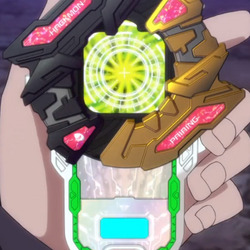

(Sorry Astora, for the blurry photo)
But now we get interesting, each DUO has two colors, each chosen’s main color and a secondary one. All but one of them have the same secondary color, and guess who that is!
It’s Yuujin. Because of course it is.
Yuujin has purple as the ‘top’ color, which as I’ve stated represents himself and Offmon, but on the ‘bottom’ color, it’s white, silver, really.
All the rest of the chosen have their respective colors on the top portion, and a yellow, gold, on the bottom. Now what could this all mean?
I, personally, see it as a slight show of Yuujin’s “other” nature. Being a second “sixth ranger” and, of course, being an A.I. being originally made for Leviathan before Minerva decided to use him herself.
Now, I can’t really talk about color theory and why Yuujin, Leviathan, is silver while the others, Minerva, are gold, but I can talk about my own headcanons and general AU bs!
So, speaking of the appdrives and Leviathan, that brings us to everyone’s favorite arc-long villain, Unryuji Knight.
We see in the fight between Warudamon and the app drivers there is a mysterious applidriver who allows for Mienumon to app fuse her to get her to ultimate, and this mysterious appli driver also shows up with Cameramon to app fuse him to Scopemon.


As we can see here, from Mienumon being listed as Knight’s buddy, (I think from the manga?) it would make sense for this mysterious applidriver to be our dear Knight.
Now, why am I saying this?
What color would his appdrive be?
To confirm that the manga is the reason why Knight is listed as Mienumon’s buddy, here on Wikimon it lists all the applidrivers:

Of course, the color is listed as “unknown”, which makes sense, it means we, the fans get to speculate!
(Also, slight mention for the game appdrivers, apparently Kazuki/Itsuki, who I believe are the male/female protagonists, have white appdrives. I’m ignoring that because it’s game canon, not show canon.)
Now, the easiest color to choose for him would be white, as that is what he is mainly seen wearing. However, as I’ve previously mentioned, the appdrive’s color seems to match the buddy, not just the child.
This, decidedly, makes things harder.
Of course, we could give him, maybe a pink, to match Mienumon, as blue and purple are already both taken (unless we want to go with a “different shade is good enough!” Approach) but, I and others who have watched the show know that this isn’t quite right. Knight originally had an app that he himself made, being a messaging app, before it got shut down due to hate speech.
Of course, we would go with this app’s color scheme instead. I don’t remember if we ever get to see this app’s icon in the show? I think it’s shown, but I don’t really remember the color scheme. But even, I do have my own ideas!
Now, I know that I said that white is the obvious option, and it is the one that I would pick for his applidrive, but I did want to talk about his buddy as well. So with that out of the way, and me diving into the trenches of my own cool ideas without regard for what makes the most sense, I do have a fun idea as to how Knight’s applidrive more interesting!
I think it’s be cool, if like Messemon, which has multiple colors, Knight’s appdrive reflects off different colors as well! Of course, the base color would still be white, but depending on the angle, maybe the outline color could change? Maybe green, blue and red like we see from Messemon? Or something else?
Idk, I just think it’s cool.
Oh, and of course, with his DUO the secondary color would be silver like Yuujin’s.
New section: My madness (with a hint of analysis still sprinkled in)
So, now that I’ve got all of the canon stuff out of the way, with an exception of Hajime, which I will get to in this section, I can talk about my own personal headcanons/post-canon AU stuff!
Let’s start out simple with “still in the realm of canon” Hajime!
I believe that his appdrive color would be orange, because yellow’s already taken and it’s reasonable to get orange from both Hajime and Onmon/Bootmon. For his secondary DUO color though, I’d imagine it to be neither silver, nor gold. Instead being a bronze, as by the time he gets his appdrive, both are gone.
Now, into my madness! Yuu, my headcanon/OC character. If you haven’t read my little “introduction post” I suppose it would be called, for him, the basic premise for his character is: Yuujin but one model down is brought to life by the Katsura’s, who he now lives with. He has an identity crisis over 1) being an android and 2) not having any memories of the main story, as he’s currently YJ-12, if you will. He ends up having so much of an identity crisis because (when I first imagined him he was Hajime’s age without me thinking of the implications) he wanted a more “fresh start” of being his own person. He’s now Hajime’s age and he goes by “Yuu Katsura”
Anyway, with that out of the way, I can get into what I actually wanted to talk about! Of course, as this is post canon, his secondary color is bronze, just as Hajime’s is. But his primary color? At first, I wanted it to be green, as that’s Yuujin’s main color, and it could be like they switched, Yuujin wears green with a purple appdrive, and Yuu wears purple and has a green appdrive. But then I had my appdrive color realization, and luckily, purple is not Offmon’s only color!
So Yuu’s applidrive would have grey as its primary color and bronze as its secondary color.
Now, for awhile, Astora’s cousin, Hinarin, was my Side Character I Care Way Too Much About. So, of course, I had to give her a buddy of her own! And so, I ended up giving her the buddy appmon of Dancemon! It makes sense, as she’s Astora’s cousin so a variant/coincidental resemblance to Musimon makes sense. Plus, as she’s been bedridden in the hospital for quite some time now, having such an active buddy would be really fun! I even came up with an episode idea for the two, but I never got around to really writing it, Y’know?
Anyway, all this is to say, green primary color, bronze secondary color.
Onto Ai! Now, I mainly associate her with the color pink, but as I’ve already discussed, there’s more to it than just that. So, who would her buddy be?
Now, I’ve seen people say that Bookmon would be a great buddy for her, and while I do agree, it would seem a bit, off. If you know what I mean.
Gatchmon, Musimon, Dokamon, Hackmon and Offmon (and Onmon/Bootmon, if we want to add Hajime) if you think about all these appmon, adding Bookmon to the roster would look, odd, would it not? After all, all of them are, idk how to describe it, vaguely humanoid? Of course, all except Hackmon, who’s more beastioid? I mean, It’s not like any of them look as human as say, Mienumon, off the top my head, but none of them are object appmon either.
So, no, I would not have Bookmon be AI’s buddy. Who would I choose?
Well, honestly, I kinda want to make an OC appmon for her buddy, so, in terms of applidrive colors?
Pink primary, bronze secondary.
Bonus:
Watson can have that one Roleplaymon variant we see in his joke backstory. The one based off the successful RPG app game.
Idfk, brown and bronze?
#appmon#digimon universe appli monsters#thanks for reading all of this if you did#I’m not going to tag everyone
2 notes
·
View notes
Text
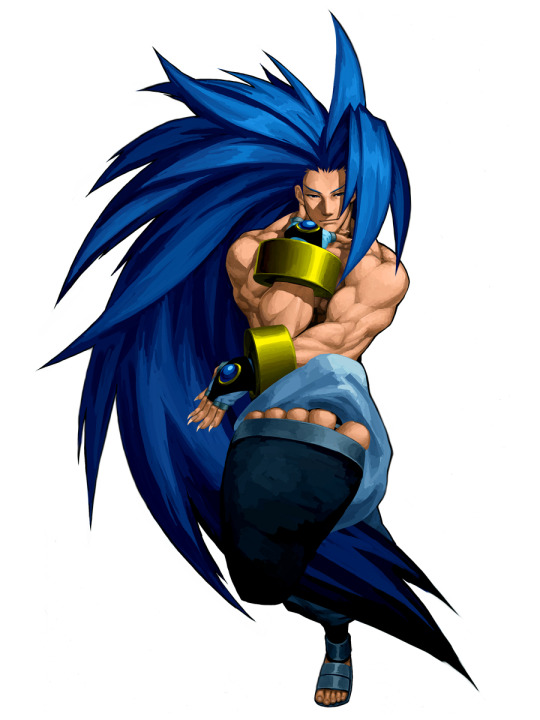
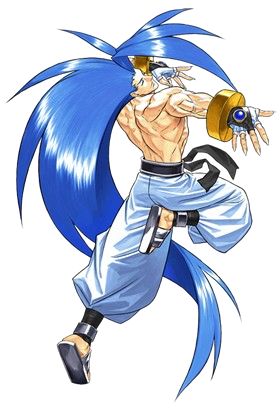


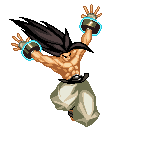

Suija - samurai shodown
Suija is a demon who took over a random ninja of the Kazama clan. Suija is one of Liu Yunfei's disciples from 1,000 years ago who succumbed to the powers of the demon world. He and his brother became powerful elemental demons that were eventually sealed. However, they were able to break the seal. He possesses a shinobi from the Kazama clan, who was investigating evil energies close to the lake where he was sealed. He meant to reunite with his brother and steal a spell that Kuraki-sumeragi possessed. The spell allows demons to better fuse with a human host. With this spell, he wished to possess Sogetsu's body and mate with a woman to spread his essence in the human world. Parallel to Enja's fate with Kazuki, however, Suija is sealed in Sogetsu's weapon by Hazuki.
Although he is based on "Suija Sogetsu" from Samurai Shodown 64: Warriors Rage, he is not the same person as Sogetsu. Due to their likeliness to one another, the dubious nature behind Sogetsu's birth, as well as Suija's need for a human host, several fans speculate that he is actually Sogetsu's father. However, this claim also lacks a solid official source and is generally considered to be conjecture by fans.
#suija#gif#retro game#retro#90s#video games#fight#samurai spirits#samurai shodown#yokai#demon#pixel animation#pixel graphics#pixel gif#video game characters#water power#pixel art#pixel aesthetic
1 note
·
View note
Photo
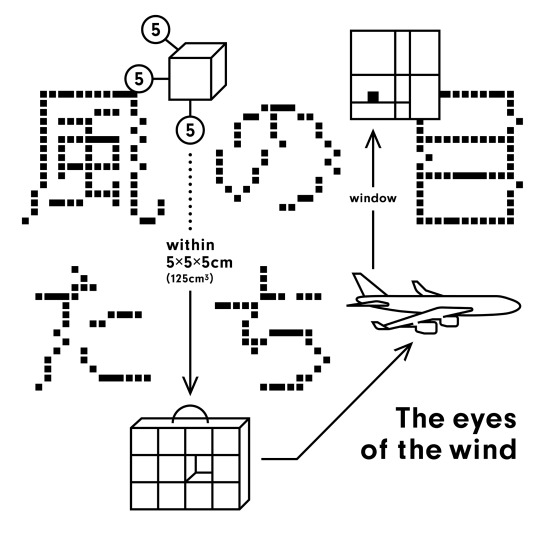
The Eyes of the Wind Vol.2
Vennu: Freyaalt
Dates: June 4, 2023 “followed by a permanent installation tour at various locations in the city”
Co-planning/local coordination: Kyohei Fujio
Assistant Director: Hara Chikei
Companion Editor: Moe Nishiyama
Graphic Design: Okuda Nahoko (NiNGHUA)
Design of Artwork Transport Box: Takuto Ohta
Production of Artwork Transport Box: KIU furniture factory
Concept Make: Yoshida yamar
Organizer: FLOATING ALPS LLC
-
Exhibiting Artists:
Ahmed Mannan
Asako Ishizaki
BIEN
Etsuko Ichihara
Hiroto Terauchi
kazuki kimura
Kenta Ishige
Kyohei Fujio
Meguninja
Mizuki Matsuda
Naoshi Kondo
Nozomu Kishimoto
Rick Yamakawa
Rintaro Fuse
Shota Tsukiyama
Shu Yonezawa
Tomotosi
Waka
Yoshida Yamar
Yuki Hori
Yusuke Asai
0 notes
Photo
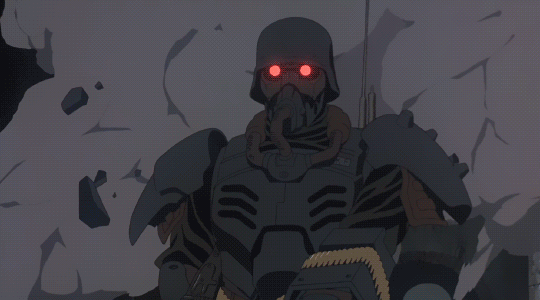
503 notes
·
View notes
Photo



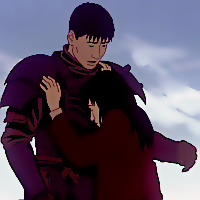
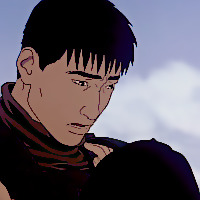

Fuse Kazuki and Amemiya Kei from Jin-Roh: The Wolf Brigade 🐺
#Jin Roh#Jin Roh: The Wolf Brigade#Fuse Kazuki#Amemiya Kei#Kazuki Fuse#Kei Amemiya#pairs#couples#iconnot icons#source: anime films
21 notes
·
View notes
Photo

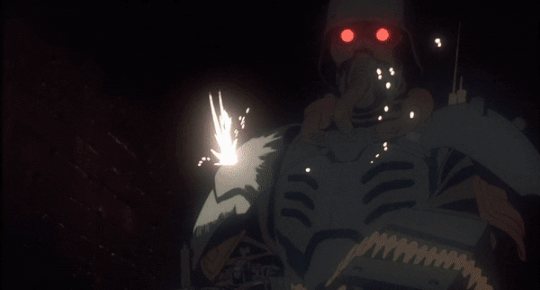
#gif#jin roh#人狼#jin-roh: the wolf brigade#film#movies#anime#cinema#anime gif#kazuki fuse#film gif#hiroyuki okiura#hisao shirai#machine gun#bullets#armor
44 notes
·
View notes
Text
My new fictional crush is Kazuki Fuse
#I saw a sad man with a morally questionable job and fell in love#bethgibberish#kazuki fuse#jin roh shitpost
4 notes
·
View notes
Photo
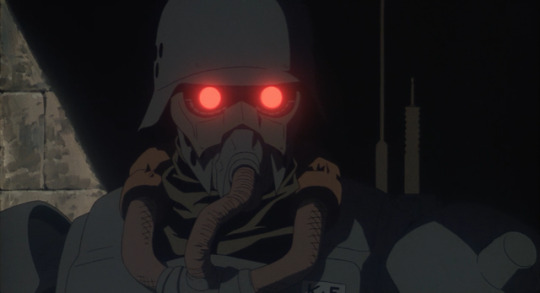
10 notes
·
View notes
Photo

Jin-Rou
25 notes
·
View notes
Text
Toku Tuesday 50: the Kerberos Saga
Last week on Animation Night I wrote about the mighty Hiroyuki Okiura, and I mentioned his best known film, Jin-Roh: The Wolf Brigade. I promised a one-off return of Toku Tuesday in which we'd watch the first two Kerberos films of Mamoru Oshii, and then Jin-Roh in its proper context.

The first two Kerberos films are perhaps even less known in the West than Oshii's other toku films like Avalon. They've only ever gotten fairly small-scale DVD releases, they have almost zero footprint on torrent sites, and the people who've actually seen them (compared to Jin-Roh, widely regarded as a classic) is tiny. And when they do see it, most people come at them with a sense of putting Jin-Roh into its historical context, which... yeah, guilty.
Kerberos began in 1986, a couple of years after Oshii had left Urusei Yatsura and not long after Angel's Egg; it overlaps with the founding of the Headgear art collective which would create Patlabor. The core series comprises the movie trilogy, lots of manga, and a couple of radio dramas.
It is set in a near future in which Japan was conquered (somehow) by the Nazis instead of the Americans, hence the prominent Stahlhelm imagery - which might have something to do with the overlap between anime otaku and military otaku, manifesting in a fascination with particularly Nazi equipment in anime of this time - you catch glimpses of it in e.g. Gainax's Otaku no Video and FLCL, and Oshii himself had already poked fun at it in Urusei Yatsura.
But, to be fair, this is a story about fascism, martial law and men whose ideology that holds them to be supermen whose mission is to bring order to an unruly country. So it's not like Nazi imagery is inappropriate to such a story. Let's briefly summarise what we're in for.
The three main films in the Kerberos series procede backwards in time. They all deal with a special power-armoured police unit called Kerberos, which quickly abuses its power and gets disbanded by the state. The first one, The Red Spectacles, sees Kerberos leader Koichi Todome returning to Japan after a long period of exile when the unit was destroyed. He wanders through a dreamlike city, which in the end we learn is literally his dream, not a real vision of Japan without Kerberos.
The second, StrayDog: Kerberos Panzer Cop sees the circumstances that brought Todome back to Japan; another former Kerberos member called Inui (dog jokes!) seeks Todome in exile in Taiwan, not knowing he is bringing the attention of a rival police unit that wants to finish them off for good.
Finally, Jin-Roh, with Okiura loosely adapting the first arc of Oshii's manga, rolls back to the early days of Kerberos after their version of WWII, a time of protest not entirely unlike the Anpo protests. We watch a man called Kazuki Fuse gradually losing his humanity, and his meeting with someone who claims to be the sister of a suicide bomber he failed to gun down.
So, how's all this going to handle those hefty themes? That's what I'm interested to find out. With you, hopefully!
Alongside all this - and all the manga, radio dramas, etc. - is a weird spinoff story called Tachiguishi-Retsuden, beginning with a mockumentary about a strange underworld of noodle bars prohibited by the fascist state and the scammers who interact with them, featuring a duo who first appeared in Urusei Yatsura before being adopted into Kerberos. This used a bizarre live action-animation hybrid technique that sounds fascinating - I'll write more if I can get my hands on it.
That's all the summary I have time for now, and anyway it would be better to write more after the films are digested. So tonight we'll take a little dive into the world of Kerberos. If you'd like to join, we'll be starting in about 20 minutes at twitch.tv/canmom
7 notes
·
View notes
Photo

#jin roh#Mamoru Oshii#artwork#art#Jin-Roh: The Wolf Brigade#人狼#Kazuki Fuse#anime#manga#high res#90s anime
451 notes
·
View notes